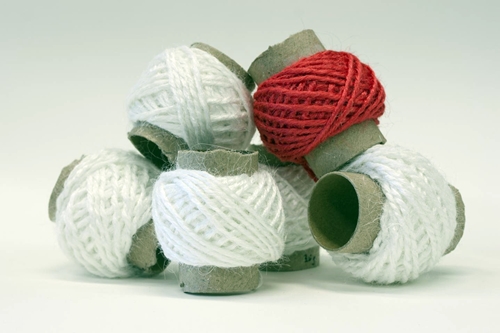30 July 2015. A materials science doctoral student in Switzerland developed a process for converting animal gelatin into a fiber similar to yarn from high-quality wool. Philipp Stössel, in the Functional Materials Lab at ETH Zurich, a science and technology university, led the team that published its findings in a recent issue of the journal Biomacromolecules (paid subscription required).
Stössel, with colleagues at ETH Zurich and EMPA – Swiss Federal Laboratories for Materials Science and Technology, sought new methods for producing fibers for commercial-quality fabrics from natural and abundant raw materials. While wool and cotton continue to be popular with consumers, synthetic fibers take a large and growing segment of the global fiber market estimated at 70 million metric tons traded each year.
The researchers aimed to produce a bio-sourced substitute for merino wool, a variety of wool from merino sheep raised in mountain regions of New Zealand. Merino wool is lightweight natural fiber, yet can still provide insulation for cold weather garments, making it popular in performance sportswear.
The team chose animal gelatin as the source for their new fiber. Gelatin is a product of collagen, found in connective tissue skin, cartilage, and bones, and produced in abundance as discarded waste products in meat-packing plants. Stössel discovered that by adding the organic solvent isopropyl to a heated solution of water and gelatin, proteins from the gelatin separated and accumulated at the bottom of the container, making them easy to remove.
The researchers designed a process for removing the separated gelatin proteins and immediately converting them into fibers. The process uses multiple syringes that extract the accumulated proteins, and under even pressure pull out continuous filaments. The filaments are collected on Teflon-coated rolls in an ethanol bath that keeps the filaments separate while hardening.
The process yields porous filaments 25 micrometers in diameter at a rate of 200 meters a minute and produced 1,000 filaments that Stössel hand-spun into a 2-ply yarn for weaving into a fabric. The filaments and yarn are smooth, like merino wool, not rough and scaly like ordinary wool that feels itchy when worn directly over skin. Electron microscope images show the interior of the fibers has numerous pores and cavities that provide insulation for cold weather wear.
That process, however, also yields a fiber that breaks down in water, a result of gelatin’s solubility. The researchers used a series of treatments, starting with epoxy to bind together the gelatin components, followed by exposure to formaldehyde gas and lanolin infusions. Stössel says in an ETH Zurich statement that the fiber is still not as water resistant as natural sheep’s wool, but he plans to address this issue in his doctoral dissertation, currently being written.
To demonstrate its commercial potential, the team produced a glove from the yarn produced in the lab. The researchers applied for a patent on their process, and are seeking partners and financing for commercialization. The Functional Materials Lab that conducted the research has a track record of commercializing its discoveries, with five spin-off companies.
Read more:
- Injectable Neuro-Electronic Wire Mesh Demonstrated
- Synthetic Spider Silk Developed with Customized Properties
- Purdue Spin-Off Designing Customized Synthetic Tissue
- Biomedical Applications for Nanofibers Sought in Challenge
- Synthetic Polymer Shown to Reduce Heavy Bleeding
* * *


 RSS - Posts
RSS - Posts
You must be logged in to post a comment.